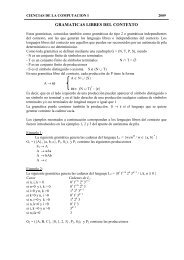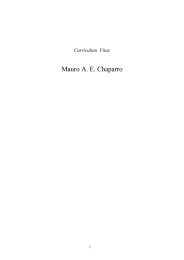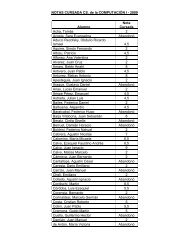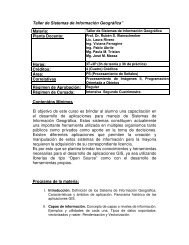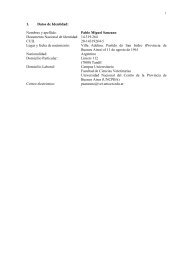Libro de Resúmenes / Book of Abstracts (Español/English)
Libro de Resúmenes / Book of Abstracts (Español/English)
Libro de Resúmenes / Book of Abstracts (Español/English)
Create successful ePaper yourself
Turn your PDF publications into a flip-book with our unique Google optimized e-Paper software.
Resumenes 176<br />
⎧<br />
2<br />
dx ⎛ x ⎞ qx ⎧dx<br />
⎛ x ⎞ qx<br />
⎪ = r⎜1<br />
− ⎟x<br />
− y 4 ⎪ = r⎜1<br />
− ⎟x<br />
− y 4<br />
⎪ dt ⎝ K ⎠ x + a ⎪ dt ⎝ K ⎠ x + a<br />
⎪<br />
⎪<br />
X µ : ⎨<br />
X µ : ⎨<br />
⎪<br />
2<br />
⎪<br />
⎪dy<br />
⎛ px ⎞<br />
=<br />
⎪ ⎜ − c ⎟ y<br />
⎪dy<br />
⎛ px ⎞<br />
=<br />
4<br />
⎩ dt ⎝ x + a ⎠<br />
⎪ ⎜ − c ⎟ y<br />
4<br />
⎩ dt ⎝ x + a ⎠<br />
parameters are all positives and have different biological meanings and<br />
systems are analyzed at the first quadrant. It is proved that<br />
1) (0,0) is always a saddle point meanwhile the nature <strong>of</strong> (K,0) <strong>de</strong>pen<strong>de</strong>nt if<br />
there exist equilibrium points at interior <strong>of</strong> the first quadrant.<br />
2) There are conditions on the parameters for which it has two, one or none<br />
positives equilibrium point.<br />
3) When collapse the positives equilibrium point, this is a cusp point <strong>of</strong><br />
codimension 2 (Bogdanovic-Takens bifurcation)<br />
4) There exist a region in the parameter space, where two limit cycles can<br />
coexist.<br />
Extinction <strong>of</strong> predators it is can possible when there are two positive<br />
equilibrium points, because (K,0) is an atractor equilibrium point.<br />
Referencias<br />
[1] Aguilera-Moya, A. and González-Olivares, E, 2004, A Gause type mo<strong>de</strong>l with<br />
a generalized class <strong>of</strong> nonmonotonic functional response, In R. Mondaini<br />
(Ed.) Proceedings <strong>of</strong> the Third Brazilian Symposium on Mathematical and<br />
Computational Biology, E-Papers Servicos Editoriais Ltda, Río <strong>de</strong> Janeiro,<br />
Vol. 2, 206-217.<br />
[2] Collings, J. B., 1997, The effect <strong>of</strong> the functional response on the bifurcation<br />
behavior <strong>of</strong> a mite predator-prey interaction mo<strong>de</strong>l, Journal <strong>of</strong> Mathematical<br />
Biology, 36.149-168.<br />
[3] Freedman, H. I., 1980. Deterministic Mathematical Mo<strong>de</strong>l in Population<br />
Ecology. Marcel Dekker.<br />
[4] Freedman, H. I., and Wolkowicz, G. S. W., 1986, Predator-prey systems with<br />
group <strong>de</strong>fence: The paradox <strong>of</strong> enrichment revisted, Bulletin <strong>of</strong> Mathematical<br />
Biology Vol 8 No. 5/6, 493-508.<br />
[5] González-Olivares, E. 2003. A predador-prey mo<strong>de</strong>l with nonmonotonic<br />
consumption function, In R. Mondaini (Ed.), Proceedings <strong>of</strong> the Second<br />
Brazilian


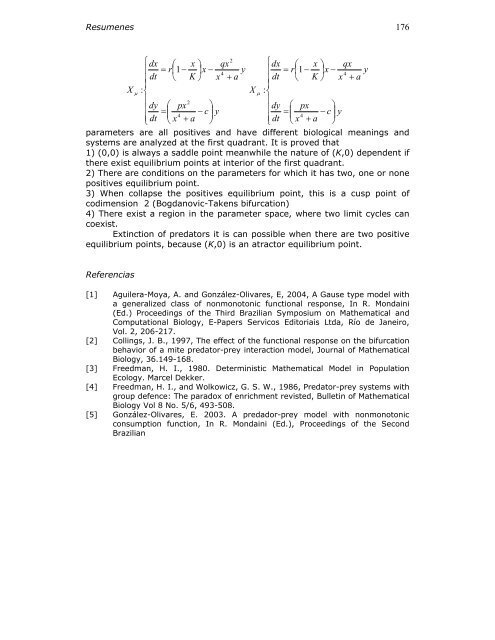
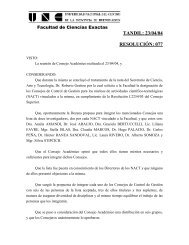
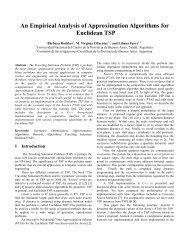
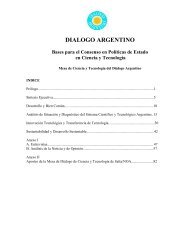


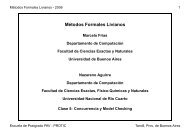
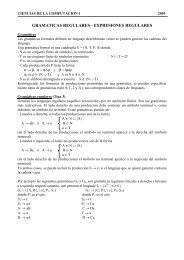

![Clase 13 [pdf]](https://img.yumpu.com/19616969/1/190x245/clase-13-pdf.jpg?quality=85)

